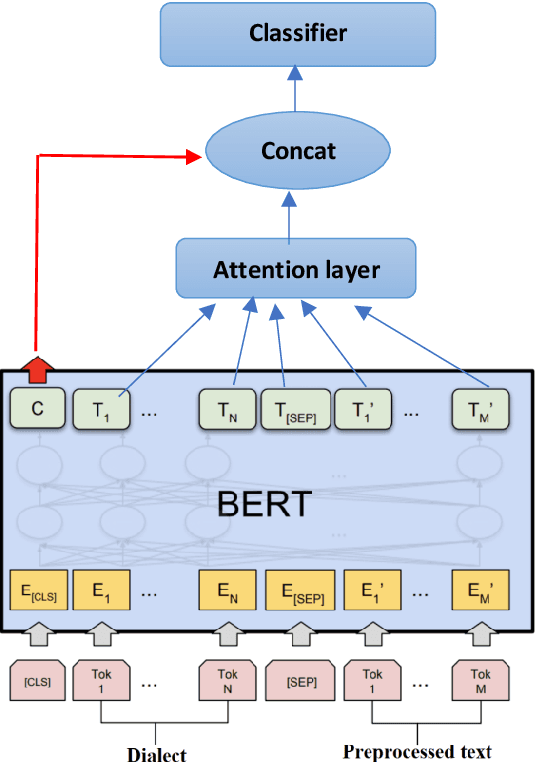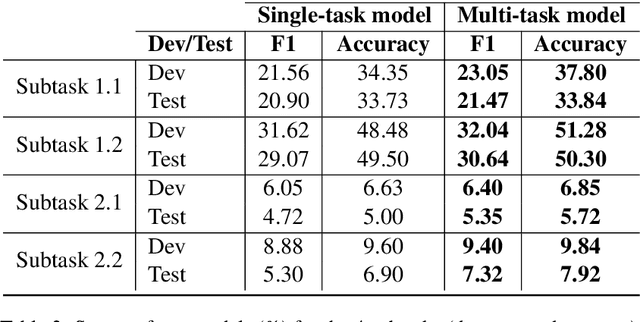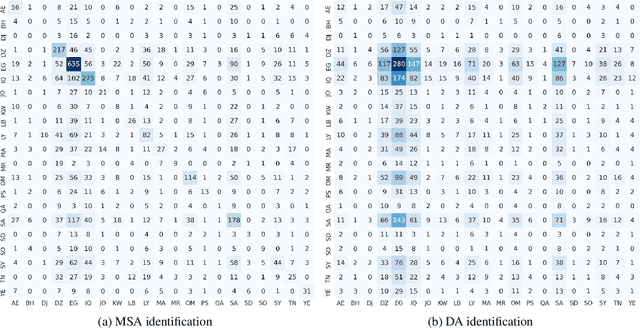Kabil Essefar
CS-UM6P at SemEval-2022 Task 6: Transformer-based Models for Intended Sarcasm Detection in English and Arabic
Jun 16, 2022



Abstract:Sarcasm is a form of figurative language where the intended meaning of a sentence differs from its literal meaning. This poses a serious challenge to several Natural Language Processing (NLP) applications such as Sentiment Analysis, Opinion Mining, and Author Profiling. In this paper, we present our participating system to the intended sarcasm detection task in English and Arabic languages. Our system\footnote{The source code of our system is available at \url{https://github.com/AbdelkaderMH/iSarcasmEval}} consists of three deep learning-based models leveraging two existing pre-trained language models for Arabic and English. We have participated in all sub-tasks. Our official submissions achieve the best performance on sub-task A for Arabic language and rank second in sub-task B. For sub-task C, our system is ranked 7th and 11th on Arabic and English datasets, respectively.
BERT-based Multi-Task Model for Country and Province Level Modern Standard Arabic and Dialectal Arabic Identification
Jun 23, 2021



Abstract:Dialect and standard language identification are crucial tasks for many Arabic natural language processing applications. In this paper, we present our deep learning-based system, submitted to the second NADI shared task for country-level and province-level identification of Modern Standard Arabic (MSA) and Dialectal Arabic (DA). The system is based on an end-to-end deep Multi-Task Learning (MTL) model to tackle both country-level and province-level MSA/DA identification. The latter MTL model consists of a shared Bidirectional Encoder Representation Transformers (BERT) encoder, two task-specific attention layers, and two classifiers. Our key idea is to leverage both the task-discriminative and the inter-task shared features for country and province MSA/DA identification. The obtained results show that our MTL model outperforms single-task models on most subtasks.
Deep Multi-Task Model for Sarcasm Detection and Sentiment Analysis in Arabic Language
Jun 23, 2021



Abstract:The prominence of figurative language devices, such as sarcasm and irony, poses serious challenges for Arabic Sentiment Analysis (SA). While previous research works tackle SA and sarcasm detection separately, this paper introduces an end-to-end deep Multi-Task Learning (MTL) model, allowing knowledge interaction between the two tasks. Our MTL model's architecture consists of a Bidirectional Encoder Representation from Transformers (BERT) model, a multi-task attention interaction module, and two task classifiers. The overall obtained results show that our proposed model outperforms its single-task counterparts on both SA and sarcasm detection sub-tasks.
 Add to Chrome
Add to Chrome Add to Firefox
Add to Firefox Add to Edge
Add to Edge